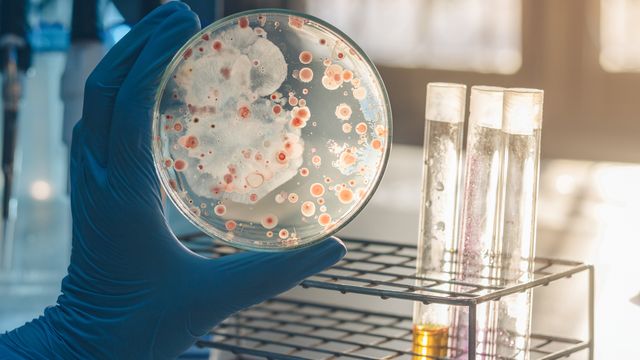Biofilm Formation Testing in Water Distribution Systems
The formation of biofilms within water distribution systems (WDS) is a critical issue affecting water quality and public health. Biofilms are complex communities of microorganisms that adhere to surfaces, encased by extracellular polymeric substances (EPS). In WDS, these biofilms can harbor pathogenic microorganisms, reduce the effectiveness of disinfectants, and degrade pipe materials over time. The presence of biofilms poses significant challenges for water utilities in maintaining potable water quality.
Understanding and mitigating biofilm formation is essential to ensure the safety and reliability of drinking water supplies. This testing service involves a comprehensive approach that includes sampling, laboratory analysis, and reporting on the extent and composition of biofilms present in WDS. The process begins with the collection of water samples from various points along the distribution network. These samples are then analyzed using advanced microbiological techniques to identify the types of microorganisms involved.
The testing procedure follows international standards such as ISO 12248-5 and ASTM E2976, which provide guidelines for biofilm sampling and analysis in WDS. The results are reported according to these standards, providing utilities with a clear understanding of their biofilm issues. This information can be used to implement targeted treatment strategies aimed at reducing biofilm formation and its associated risks.
Water distribution systems consist of numerous components including pipes, valves, meters, and storage tanks. Each component presents unique challenges for biofilm development due to differences in flow rates, water quality, and surface properties. Our testing service considers these variations by sampling from different sections of the system. This ensures a comprehensive assessment of biofilm formation across all critical areas.
The analysis focuses on identifying both pathogenic and non-pathogenic microorganisms present within the biofilms. Pathogenic organisms such as Legionella pneumophila, Pseudomonas aeruginosa, and Escherichia coli O157:H7 are particularly concerning due to their potential to cause waterborne diseases. Non-pathogenic organisms can also contribute to biofilm complexity and stability.
The testing process involves several stages: sampling, incubation, staining, microscopy examination, and identification of microorganisms using molecular techniques such as polymerase chain reaction (PCR). This multi-step approach allows for a detailed characterization of the biofilms present in WDS. The results are presented in a comprehensive report that includes descriptions of the types and quantities of microorganisms detected.
By understanding the specific composition and characteristics of biofilms in WDS, water utilities can develop more effective treatment strategies to reduce their presence. This not only enhances the safety of drinking water but also extends the lifespan of infrastructure by minimizing corrosion and degradation caused by biofilm-related processes.
Why It Matters
The presence of biofilms in water distribution systems is a significant concern for public health and environmental protection. Biofilms can serve as reservoirs for pathogenic microorganisms, which may lead to outbreaks of waterborne diseases if not properly managed. Additionally, biofilm formation can impair the performance of disinfection processes, making it more difficult to eliminate harmful organisms from drinking water.
Moreover, biofilms contribute to the corrosion and degradation of WDS components, leading to increased maintenance costs and potential disruptions in service. By conducting regular biofilm formation testing, utilities can proactively address these issues before they escalate into larger problems.
- Reduces risk of waterborne diseases: Identifying and mitigating the presence of pathogenic organisms helps protect public health.
- Enhances disinfection efficiency: Understanding biofilm composition allows for more effective treatment strategies, improving overall water quality.
- Prolongs infrastructure lifespan: By reducing corrosion and degradation caused by biofilms, utilities can extend the life of their WDS components.
Regular testing is essential to ensure that biofilm formation does not negatively impact water quality or the integrity of distribution systems. This proactive approach helps maintain a safe and reliable water supply for communities.
Benefits
- Improved public health: By identifying pathogenic microorganisms, utilities can take steps to prevent outbreaks of waterborne diseases.
- Increased disinfection effectiveness: Understanding biofilm composition allows for more targeted treatment strategies, enhancing the performance of disinfection processes.
- Extended infrastructure lifespan: Reducing corrosion and degradation helps maintain the integrity of WDS components, lowering maintenance costs.
- Compliance with regulations: Detailed reports assist utilities in meeting regulatory requirements for water quality and safety.
- Proactive management: Regular testing allows for early identification of biofilm issues, enabling utilities to address them before they become critical problems.
- Cost-effective solutions: Targeted treatment strategies based on test results can lead to more efficient use of resources and lower operational costs.
In summary, biofilm formation testing is vital for maintaining the safety and reliability of water distribution systems. By addressing potential issues proactively, utilities can ensure a continuous supply of safe drinking water while minimizing long-term expenses.
Eurolab Advantages
At Eurolab, we offer unparalleled expertise in biofilm formation testing for water distribution systems. Our team of experienced microbiologists and engineers use state-of-the-art techniques to ensure accurate and reliable results every time. With a proven track record of delivering high-quality services across various sectors, we are committed to helping utilities achieve their goals.
We provide not only comprehensive testing but also expert advice on how to address biofilm-related challenges effectively. Our services include one-off tests as well as continuous monitoring solutions tailored to the specific needs of each utility. By leveraging our knowledge and experience, we help ensure that water distribution systems remain safe and efficient for years to come.
Our commitment to excellence is reflected in the quality of our reports, which are designed to be clear and actionable. We work closely with clients throughout the testing process, ensuring that all aspects are addressed thoroughly. Whether you need a single test or an ongoing monitoring program, Eurolab is here to support your efforts in maintaining the highest standards of water quality.
Choose Eurolab for your biofilm formation testing needs and experience the difference our expertise can make. Together, we can ensure that your water distribution systems remain safe, reliable, and compliant with all relevant regulations.





